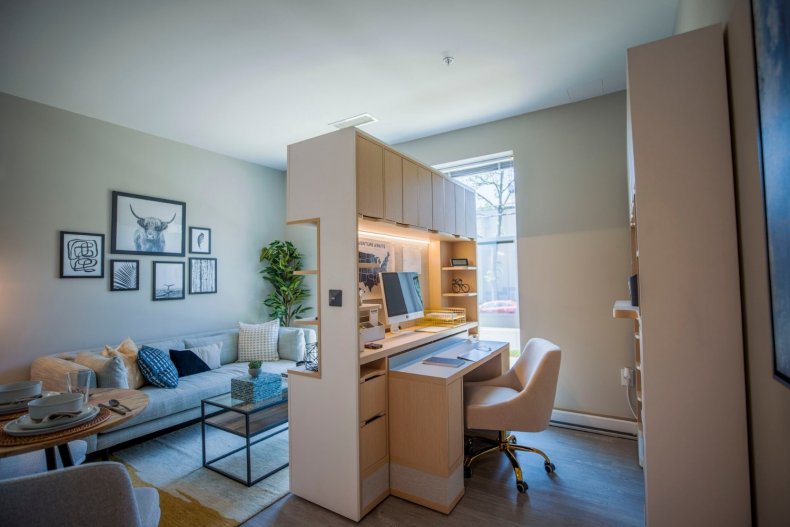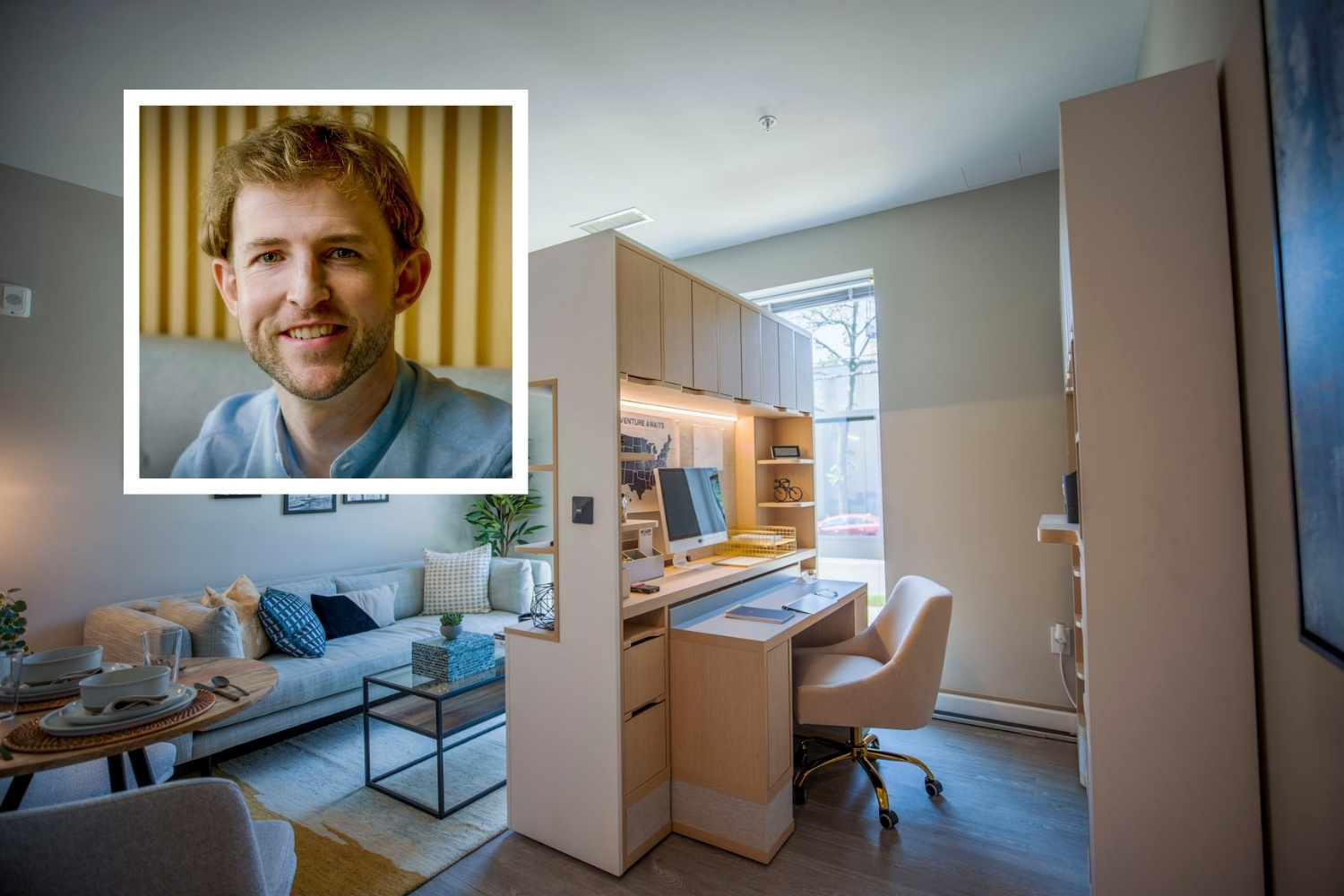One of the biggest challenges that comes with global mass urbanization is the lack of housing that is affordable. This was one of the issues I tried to tackle during my master’s program at Massachusetts Institute of Technology (MIT), where, working under the guidance of Professor Kent Larson at the MIT Media Lab, my team and I explored ways to challenge a fundamental real estate paradigm: that to live better, you need more space.
We discussed how the rent that people pay is typically proportional to the amount of space that they need to live in: the bigger the apartment, the higher the rent. That’s when we thought: Could we change people’s perception of space? Could we prove that people don’t need as much space as they think to live comfortably and functionally?
I led a team of MIT Media Lab engineers from 2011 to 2015 as we developed technology and robotics to “multiply” space. In 2015, we decided to bring these ideas from the laboratory into the world.
Three months later, we rented a studio in Boston and created our first expandable apartment. It had a robotic wall that rolled across the floor to divide the studio in two, creating some privacy between the two spaces when needed, but that could easily be moved back to create a larger single space for other activities. This wall also had a bed that could roll out the bottom, at the touch of a button, and the wall also opened up to become a walk-in closet, like Carrie Bradshaw’s in Sex and the City. These adaptations were all designed to make the studio feel more like a one-bedroom apartment, but at the cost of a studio.
We put this studio on Airbnb in early 2016 and more than 100 people stayed there—from 20-year-old couples to 80-year-old singles. Their feedback allowed us to make improvements to the features and refine the design. For example, the original system we installed was all white, and felt a little robotic, which is fine if you’re an MIT geek like me, but not if you want your home to feel more cozy and comfortable.
Hasier Larrea
From the very first designs, we made sure to prioritize safety. But we still got a ton of questions from people asking what would happen if they brought their dog or baby to the apartment, or what would happen if the apartment lost power. So we added layers of additional intelligence, so that if the system sensed it was pressing against anything, it would be able to quickly stop and retract, and we also made sure that if the system lost power, you could manually extract the bed and still get a good night’s sleep!
Over the next two years, we created many more apartments, which people could rent. In 2018 and 2019, we expanded further. Today, our company, Ori, has 500 expandable rental apartments across the U.S. and we have thousands of apartments scheduled to be installed in the next couple of years. Around 95 percent of our apartments in operation are being rented out on long-term leases of a year or more.
There is definitely a big appetite from young professionals for our expandable studios. But these studios have also been popular with a spectrum of renters, from busy nurses, to business travelers, and even empty-nesters who have been drawn back to the energy of the city.
We don’t just create expandable studios, however—we also offer expandable one-bedroom and two-bedroom apartments, which tend to appeal to couples and families.
We’ve also extended the functionality of the apartments. Some now feature what we call our “Pocket Closet” as a partition that divides the room and works as a home office on one side and expands to become a walk-in closet. Some feature a “Pocket Office,” where, at the touch of a button, the walls separate, giving you a home office in the middle of your apartment. Then, when you’re done with work, you can press a button and the office disappears.

Hasier Larrea
Then, because the bed is the biggest space-killer of them all, especially as you only need it for eight hours of the day, we developed the “Cloud Bed” solution, where your bed glides up into the ceiling, freeing the space below for you to work or socialize or exercise. As with all of our features, you can control this using your phone, or by voice command with a Google Home or Alexa.
To help people understand how we “multiply” space using robotics, I like to describe our expandable apartments as being a bit like the human body. The apartments have a skeleton, muscle and a brain and skin. The skeleton is the mechanical systems: the metal structure, the wheels, counterweights, pulleys and cords that make it possible to move. But in order to move these objects effortlessly, you need muscles—that would be the motors. Then to move these objects intelligently, you need a brain—that’s the thousands of lines of software code that are continuously monitoring all the sensors and other inputs for safety and performance, and telling the motors what to do. And the skeleton, muscle and brain are all contained within a skin, which is what people see on the outside as furniture and walls.
Ori’s “Cloud Bed” is my favorite feature, as it has the most impact on me personally. I live in a one-bedroom apartment in Brooklyn with my partner. We both often work from home. She works in the living room, where we have a Pocket Office, and I work in the bedroom, where we have a Cloud Bed. If we didn’t have a Cloud Bed, my desk would be tucked into the corner of the room, with people seeing my unmade bed in the background on video calls. Instead, when the Cloud Bed is stored up against the ceiling, the room looks, acts and feels like a fully functional work area with a sofa, coffee table and desk.
I live in a conventional, one-bedroom, 650 square feet apartment, but by adding a Cloud Bed, a Pocket Closet and a Pocket Office, we have made it feel more like a 900 square feet, multi-room apartment.
There are two ways we create our apartments. The vast majority are what we call a “retrofit,” where a building has already been designed or perhaps built, and we add our features to make apartments in the building feel bigger. For example, we might take a conventional 450 square feet studio and make it feel and function more like a 600 square feet, one-bedroom apartment. For a renter, this apartment might then be priced a bit higher than a conventional studio, but lower than a conventional one-bedroom, making it more affordable per usable square foot.
The second method is where we work with a real estate developer earlier on in the process, when the apartments have not been designed yet or when there is still time to adjust the design. This means we can optimize the use of space, increasing the density of an apartment building while expanding the functionality of each apartment. As a result, while there may be more apartments in the same overall space, each apartment feels and lives larger than its actual “base” square footage.
For example, we did this in a building in Fort Worth where the original plan was for every floor to have four apartments, but we designed it so each floor would instead have nine. These apartments were smaller but felt much bigger. And the rent was cheaper, too. Comparable studios in Fort Worth rent for about $1,500, but the apartments in this building rent for about $1,000.
When we first started Ori, our intuition was that this would be a solution primarily for the most expensive urban centers like New York, San Francisco, Los Angeles, Boston and DC. And, of course, it is—but what we have found is that people all over the country are feeling similar pressures around smaller spaces and unaffordable rents. So that’s why our expandable apartments can now be found in more than 30 cities nationwide.
Ultimately, we’re tackling a global issue. As millions more people move to cities across the world, urban homes are becoming more cramped and less affordable. So we are on a mission: To change this by creating expandable urban apartments that are more flexible, functional, affordable and sustainable—in short, living spaces that can suit the amazing diversity of people who want to live in the world’s most incredible cities.
Hasier Larrea is the CEO of Ori.
All views expressed in this article are the author’s own.
As told to Katie Russell.
